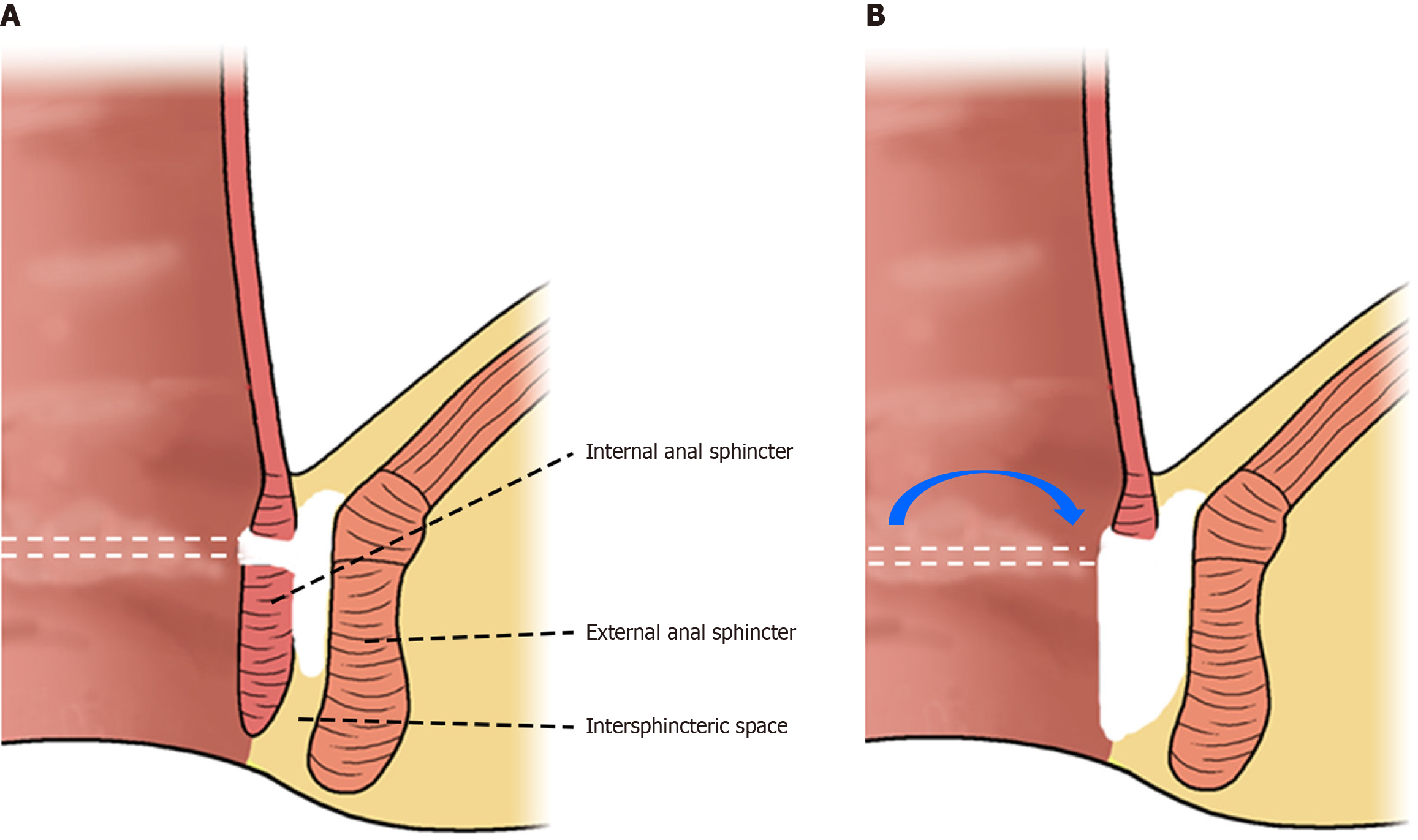Copyright
©The Author(s) 2025.
World J Gastrointest Surg. Oct 27, 2025; 17(10): 109920
Published online Oct 27, 2025. doi: 10.4240/wjgs.v17.i10.109920
Published online Oct 27, 2025. doi: 10.4240/wjgs.v17.i10.109920
Figure 1 Schematic drawing of the transanal opening of the intersphincteric space procedures.
A: Intersphincteric space infection in anastomotic leakage; B: The transanal opening of the intersphincteric space technique opens the internal orifice of the fistula and adequately drains the intersphincteric space using a transanal approach.
Figure 2 Case 1.
A: Computed tomography scan revealed contrast medium spill outside the rectum; B: Colonoscopy revealed a pin-hole fistula in the left-posterior rectal wall, indicating the formation of an anastomotic leak; C: After transanal opening of the intersphincteric space, re-examination through colonoscopy displayed intact anastomosis with a local scar without obvious mucosal depression or defect. Circle: Area of contrast medium extravasation; arrows: Opening site of the anastomotic fistula.
Figure 3 Case 2.
A: Abdominal computed tomography scan revealed a discontinuous anastomosis and the formation of an anastomotic leak; B: Subsequently after transanal opening of the intersphincteric space, an abdominal computed tomography scan showed that the anastomosis was continuous with no obvious gap; C: The colonoscopy confirmed that the anastomotic defect was healed. Arrows: Healing site of the anastomotic fistula opening.
Figure 4 Case 3.
A: Pelvic magnetic resonance imaging revealed anastomotic leak after low anterior resection; B: Subsequently, after transanal opening of the intersphincteric space, contrast-enhanced magnetic resonance imaging demonstrated an intact anastomosis; C: Colonoscopy revealed an intact and complete anastomosis. Yellow arrows: Area of anastomotic fistula opening; white arrows: Healing site of the anastomotic fistula opening.
- Citation: Li H, Huang HB, Xiang T, Yang L, Furnée EJB, Sun G, Chen WB. Transanal intersphincteric approach combined with Kangfuxin enema for treating anastomotic leakage after low anterior resection: Three case reports. World J Gastrointest Surg 2025; 17(10): 109920
- URL: https://www.wjgnet.com/1948-9366/full/v17/i10/109920.htm
- DOI: https://dx.doi.org/10.4240/wjgs.v17.i10.109920
















